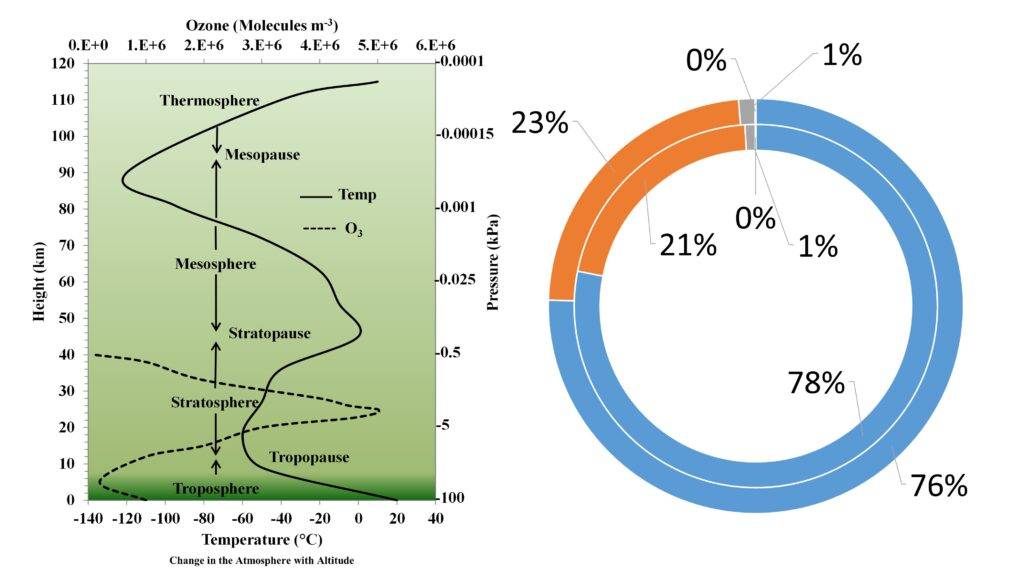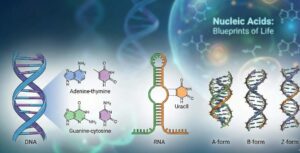
Welcome to the COMPETITIVE EXAM MCQs SERIES of ENVIRONMENTAL SCIENCE for UGC-NET/JRF, SLET, GATE, and other entrance tests. This quiz has 25 concept-based MCQs on the Environmental Chemistry – Composition of Air.
Syllabus outline
- Components and structure of Earth’s atmosphere.
- The role of air in environmental systems and its importance in environmental chemistry.
- Trace gases, including greenhouse gases and their impact on global climate change.
- Assessment of pollutant gases (e.g. effects on air quality and human health).
- Study of suspended particulate matter and its sources.
- Environmental and health implications of particulate matter in the atmosphere.
- Regulatory framework for controlling air pollution.
- Knowledge of air quality standards and monitoring methods.
- Identification and study of major gases present in the atmosphere.
- A discussion of global environmental challenges related to air composition and pollution is also included.
This quiz contains the concept-based most frequently asked 25 MCQs of Composition of Air. Each question has a single correct/most appropriate answer.
1. What is the origin of the Earth’s atmosphere?
a) Anthropogenic activity
b) Volcanic activity
c) Biological activity
d) Both Volcanic and Biological activity
2. What is the primary function of argon (Ar) in the atmosphere?
a) It provides oxygen for breathing.
b) It supports combustion.
c) It serves as a noble gas with no significant reactivity.
d) It is a greenhouse gas.
3. Which of the following is NOT a common method for measuring air quality?
a) Barometric pressure measurements
b) Gravimetric analysis
c) Remote sensing via satellites
d) Gas chromatography
4. What is the fastest recorded gust of wind on Earth?
a) 322 Km/h
b) 161 Km/h
c) 408 Km/h
d) 5 Km/h
5. In which atmospheric layer do weather phenomena such as clouds and precipitation occur?
a) Mesosphere
b) Thermosphere
c) Troposphere
d) Stratosphere
6. What are bioaerosols?
a) Insects that can fly long distances
b) Microscopic organisms that travel through the air
c) Microorganisms that live in soil and water
d) Birds that migrate using wind currents
7. In human-exhaled air, which gas concentration is the highest?
a) Water vapour
b) Carbon dioxide
c) Oxygen
d) Nitrogen
8. What is the third most abundant gas in Earth’s atmosphere?
a) Oxygen
b) Nitrogen
c) Argon
d) Carbon dioxide
9. Which is NOT a regulatory measure to control air pollution?
a) Carbon offset programs
b) Emission standards for vehicles
c) Ambient air quality standards
d) Industrial emissions permits
10. Which layers of Earth’s Atmosphere are marked by a decrease in temperature with an increase in elevation?
a) Troposphere and Stratosphere
b) Mesosphere and Thermosphere
c) Stratosphere and Mesosphere
d) Troposphere and Mesosphere
11. What gas is used in airbags to inflate them rapidly during a car collision?
a) Nitrogen
b) Carbon dioxide
c) Oxygen
d) Helium
12. What are the criteria pollutants?
a) Gases that are harmless to humans
b) Gases responsible for climate change
c) Pollutants that have set air quality standards
d) Gases that are naturally occurring
13. Which is representing average gases proportion by weight in the atmosphere?
I – 75.47% Nitrogen
II – 23.2% Oxygen
III – 1.28% Argon
IV – 0.062% Carbon Dioxide
a) I and II
b) I, II, III and IV
c) Only I
d) I, II and III
14. How do bioaerosols primarily move through the air?
a) By flying like birds
b) Via wind, rain, or sneezing
c) Through the use of tiny wings
d) By attaching to larger airborne particles
15. What is the significance of international agreements and protocols related to air quality and climate change?
a) They focus solely on regional air quality issues.
b) They establish legally binding targets and guidelines.
c) They provide funding for air quality research.
d) They have no impact on global air quality.
16. Helium (He) is known for its low density and is used in which of the following applications?
a) Scuba diving tanks
b) Balloon Inflation
c) Breathing masks for medical patients
d) Rocket propulsion
17. What is the approximate percentage of nitrogen in the Earth’s atmosphere by weight?
a) 95
b) 47
c) 2
d) 08
#18. What is the approximate percentage of oxygen in exhaled air?
a) 4%
b) 04%
c) 21%
d) 4%
19. What is the main source of argon in the atmosphere?
a) Bacterial activities
b) Volcanic eruptions
c) Burning of fossil fuels
d) Radioactive decay in rocks
20. What is one of the main factors contributing to the wind’s ability to transport particles over long distances?
a) Particle size
b) Wind-resistant particles
c) The time of day
d) The temperature of the air
21. Air quality indices (AQI) are used to:
a) Measure ozone depletion.
b) Measure greenhouse gas concentrations.
c) Assess and communicate air quality to the public.
d) Monitor changes in atmospheric pressure.
22. Which of the following is mainly responsible for the hazy appearance of smog in urban areas?
a) Carbon dioxide
b) Nitrogen
c) Particulate matter
d) Oxygen
23. Which of the following correlations between inhaled (I) and exhaled (E) air is correct?
I – Nitrogen (I > E)
II – Oxygen (I > E)
III – Carbon dioxide (I < E)
IV – Water vapour (I < E)
a) II, III and IV
b) I, II and IV
c) Only III
d) II and III
24. Water vapour in the atmosphere is crucial for which of the following?
a) Generating ozone in the stratosphere
b) Regulating air pressure
c) Weather patterns and climate regulation
d) Shielding the Earth from solar radiation
25. What is the ionosphere?
a) The layer of the atmosphere where the ozone layer is located
b) The layer of the atmosphere where satellites orbit
c) The layer of the atmosphere closest to the Earth’s surface
d) The layer of the atmosphere where auroras occur
Previous: Fundamentals of Environmental Chemistry
Next: Chemical speciation
References
- Seinfeld, John H. and Pandis, Spyros N. (2016) Atmospheric Chemistry and Physics: From Air Pollution to Climate Change, John Wiley & Sons, 3rd edition.
- Lutgens, Frederick K. and Tarbuck, Edward J. (2014) The Atmosphere: An Introduction to Meteorology, Pearson, 13th edition.
- Arya, D. S. (2003) Introduction to Meteorology, McGraw Hill Education, 4th edition.

